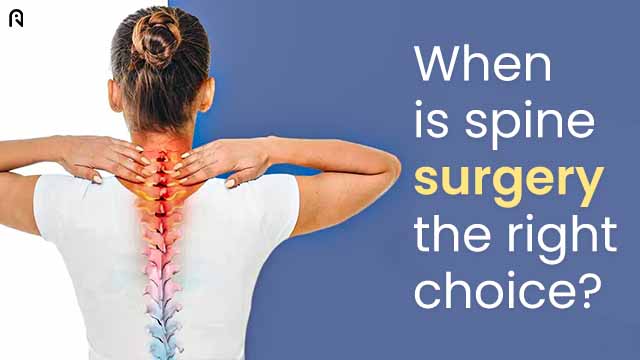Hole in Heart Treatment Options for Babies

Table of Contents
A hole in the heart means there will be difficulty passing blood to the body with the complete requirement of oxygen. This is one of the congenital disabilities that may happen to anyone. In most cases, the heart’s upper chamber (atria) possesses a hole in its wall (septum) that divides the chamber into two parts. A hole in the heart of babies or a hole in the heart’s upper chamber may lead to various symptoms like blue skin because of the deoxygenated blood in the body.
What is a hole in the heart called? Is it a pediatric issue or a congenital one?
A hole in the heart may happen to anyone. The baby is born with the defect or by birth if it is related to congenital issues. In medical terms, a congenital hole in the heart is called an atrial septal defect (ASD) which may appear after a hole forms in the wall (septum) that divides the upper chamber or atria of the heart. A hole in the heart may be tiny at birth but become prominent when the child grows. This medical condition needs to be treated timely unless there can be deaths or other mishaps leading to difficult survival.
- A baby may develop a hole in the heart during pregnancy or when the baby is in the womb. This may usually appear or becomes visible when the baby is born or shortly after the birth.
- Several openings exist in the walls dividing the upper chamber of the heart. During birth, this has to get closed in ordinary cases, but in some instances, it may not get closed, leading to a hole left behind.
The presence of a hole leads to an increase in the amount of blood flowing through the chambers. This results in overflow and damage to the blood vessels. This leads to severe issues if the patient survives or becomes an adult. Heart strokes and abnormal heartbeat are among the problems that may appear.
Occurrence
A hole in the heart of babies is one of the most prevalent diseases across the world, affecting around 2,000 babies annually after 2019. Statistically, one in every 1000 babies is affected with ASD- a disease that leads to a hole in the heart.
What can be the serious causes of ASD or the hole in the heart? What factors may affect the occurrence of this disease?
There is no certain cause of a hole in the heart of babies. However, it is known that some genetic changes in babies may lead to such an issue. Such genetic issues are not thought to be in contact with environmental conditions that a mother-to-be comes within. Moreover, this is not considered connected with the medicines a mother takes during pregnancy.
Diagnosis
Although it is one of the hard-to-treat diseases, it is detectable during pregnancy or after the baby is born. The condition is often visible when the child becomes an adult, and the disease starts affecting the skin or other body parts.
- During the pregnancy, the mother may have a screening test. This test may help to reveal any kind of defect in the newborn that is still in the womb. Such an issue is visible in imaging tests like ultrasound and may depend on the baby’s size. However, even if the condition is detected, the doctor may require confirmation of the disease through other available methods.
- Sometimes, pregnancy alone cannot depict what the condition of the baby will be after birth. When the baby is born, the baby may or may not have the symptoms or the signs showing a hole in the heart. However, there can be certain signs that may help to detect a hole in the heart of babies-
- lung infections
- difficulty breathing
- shortness of breath
- skipped heartbeat
- the whooping sound that is audible through a stethoscope
- swelling of legs, feet, or stomach area
- stroke
The disease may not be detectable until the baby reaches the adolescence stage. One of the most common signs that may help to detect a hole in the heart of babies is the murmuring sound that is audible in the stethoscope while the baby’s heart is checked or read. In such conditions, your healthcare practitioner may advise you for other various diagnostic procedures. Furthermore, this test can be detected through an echocardiogram called an ultrasound of the heart.
What are the different or certain countable or available treatment methods for a hole in the heart of babies?
As discussed above, the condition is sometimes not detectable until the human being reaches adolescence. This means that Hole in Heart treatment options depend on age, the diagnosing method, the symptoms, the size of the hole, and other conditions affecting the heart’s health. Certain medications may help babies and adults repair their known-unknown or detectable, or undetectable causes.
In children or infants, there are two types of hole in heart treatment options for babies, and these are-
- Catheter-based repair. There is a thin, flexible and long tube that is inserted in the blood vessel of the child. This is usually done through the passage of the groin area. The imaging technique is used to guide the whole procedure. Later, a mesh patch or plug is passed through the catheter, which closes the hole. Then the growth of the child lets the heart develop the tissues around the hole and the catheter, causing the heart hole to close permanently.
- Open-heart surgery. In this surgery, an incision is made on the chest. Here the doctors or the surgeons have direct access to the heart through the incision. After the making of an incision, the surgeon utilizes a patch to close the heart hole.
A hole in the heart of babies requires regular healthcare checkups or a diagnosis of the condition. This is why you may be required to visit the doctor regularly for an updated echocardiogram and a regular check on the health conditions like heart rhythm, blood pressure, etc.
Also Read: How Mental Health Affects Physical Health
How to Sleep After a Tummy Tuck?
Can Breast Cancer be Treated Without Surgery?
Tips for Muscle Pain Remedies at Home
Which are the Common Liver Diseases?



